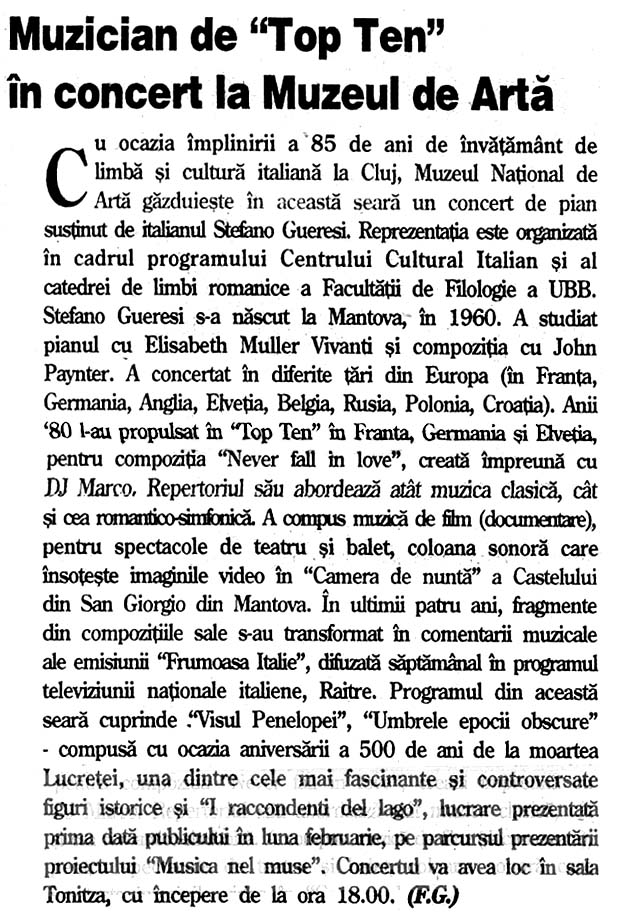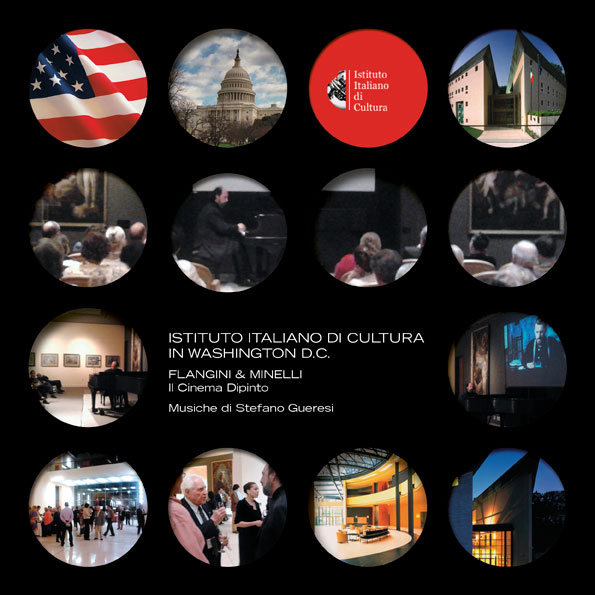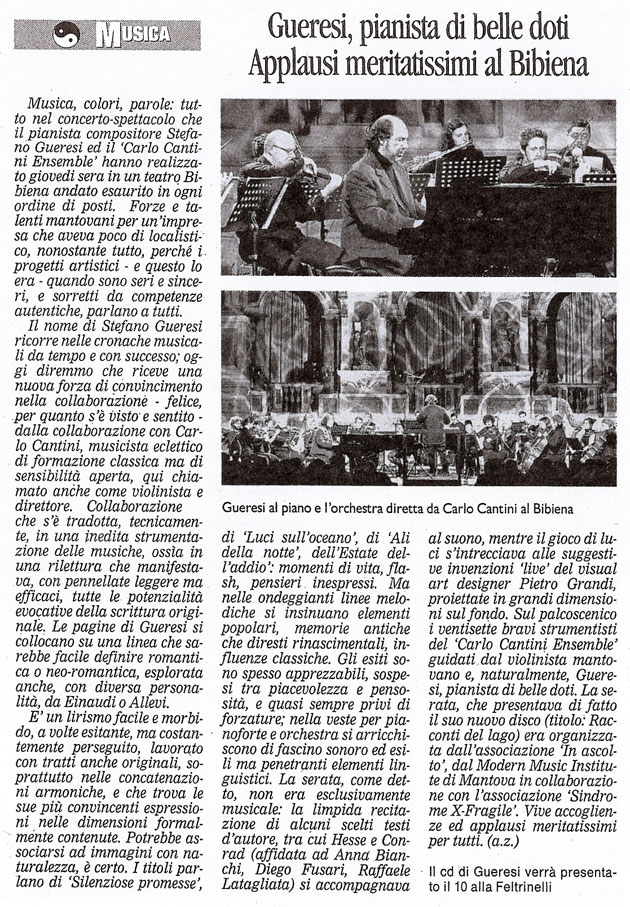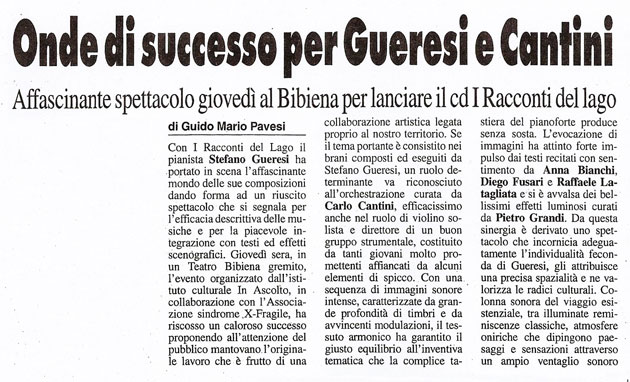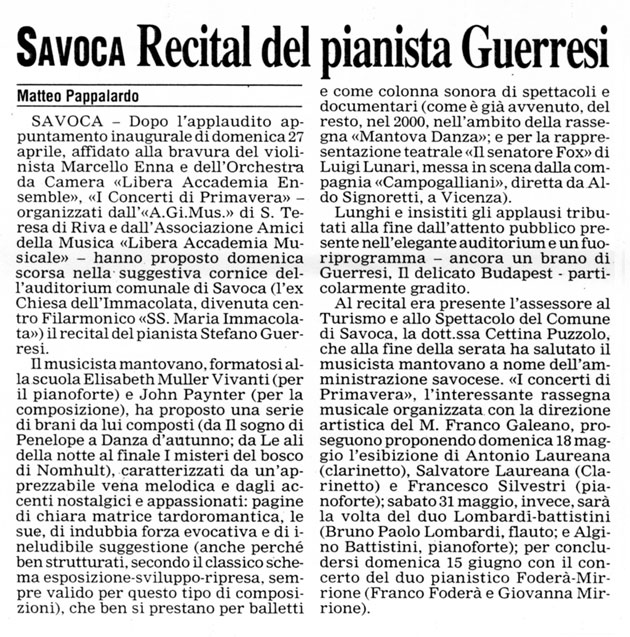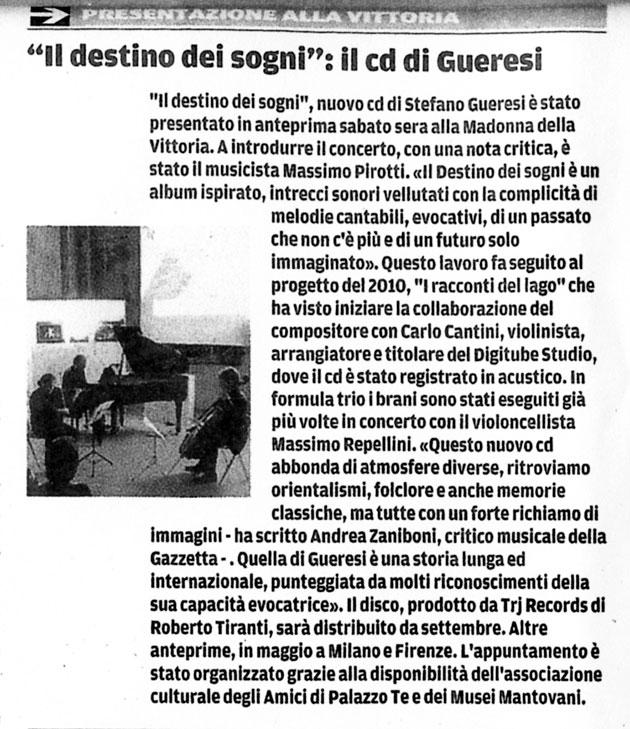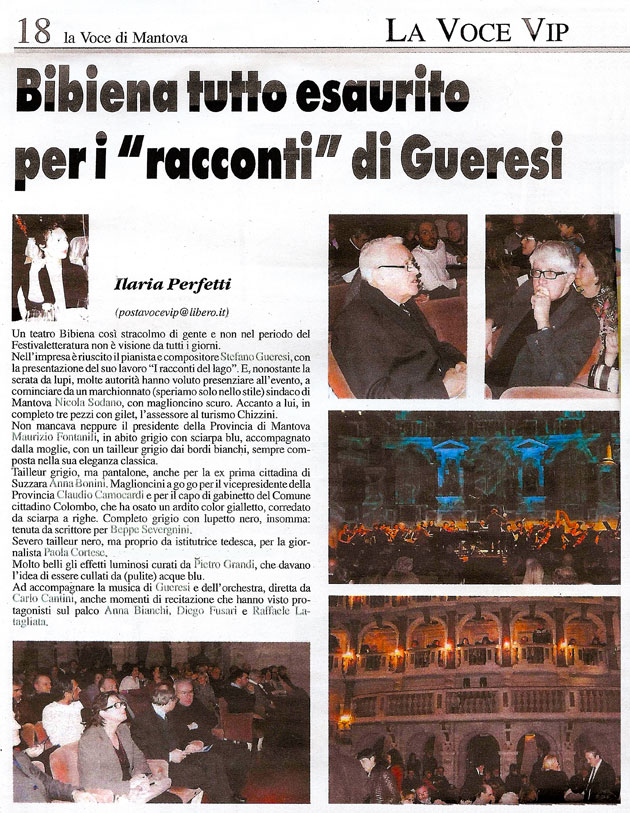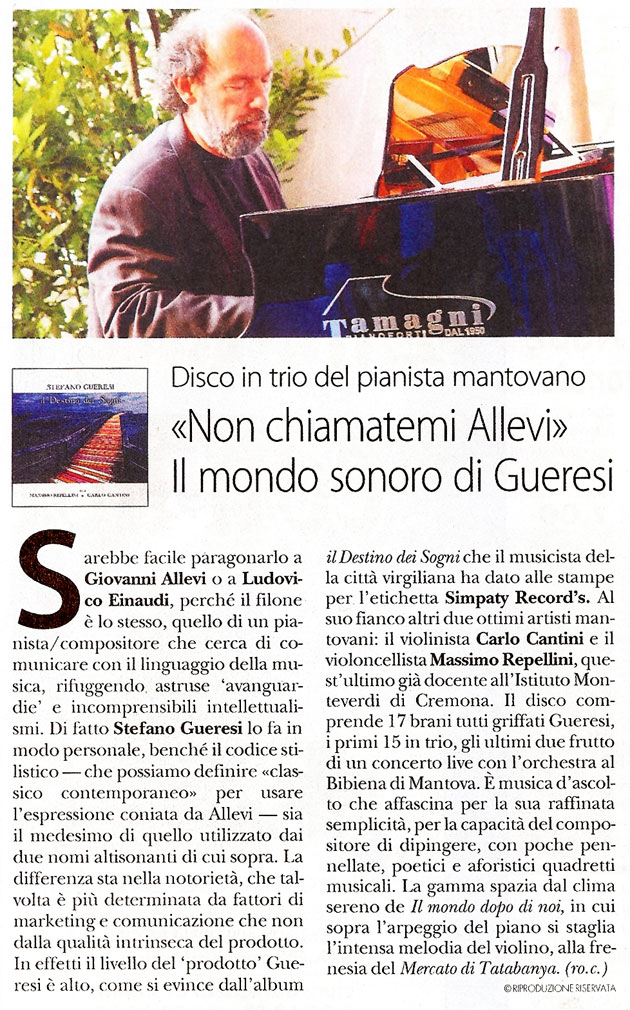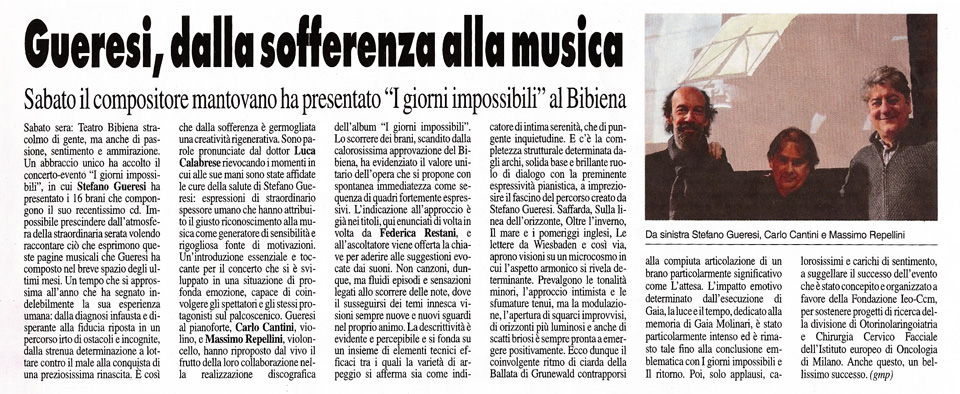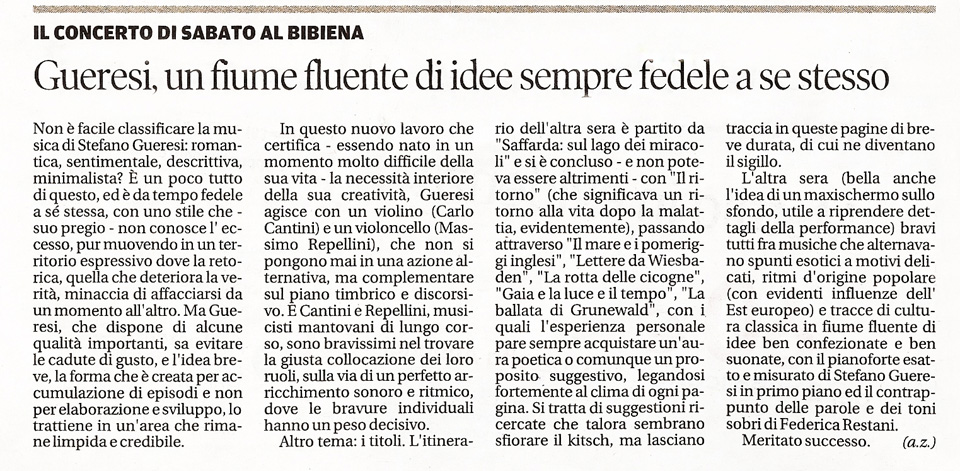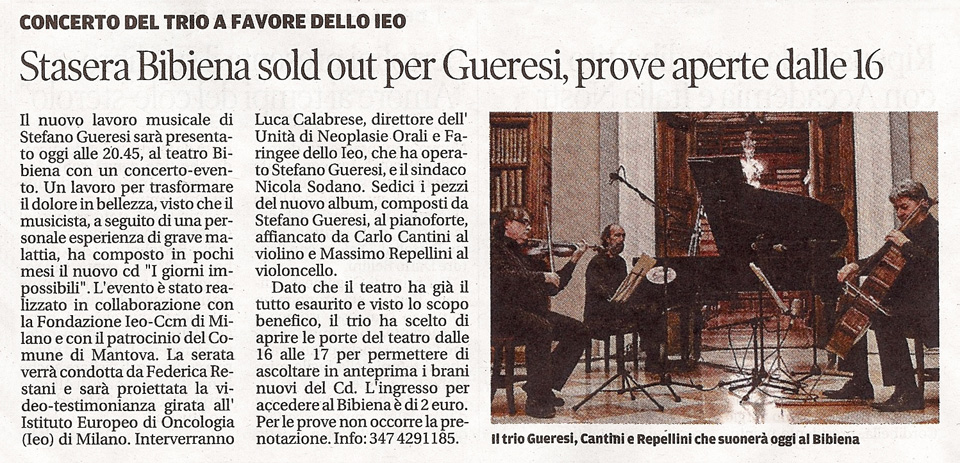With this initiative, the civic museums have been enriched with a new experience: music in the museum. And this is happening thanks to the contribution of one of the most refined artistic personalities of contemporary Mantuan culture, Stefano Gueresi. For this reason I’d like to thank the author who, by breathing in the suggestions of the museum, has composed unpublished pieces of great charm, destined to accompany us on our visit. I would also like to thank the director of Museo della Città San Sebastiano, Stefano Benetti, who conceived and made the project possible.
Fiorenza Brioni (Mayor of Mantua)
Today more than ever museums must open up to the city and its liveliest and most creative forces. I am therefore proud to be a witness and convinced supporter of an experience like this one, bringing together museum and music in a union capable of enhancing both. A musical talent like that of Stefano Gueresi can only be a source of pride for a museum precisely because it is the Museum of the City’s primary mission to promote our cultural and artistic excellence. Our heartfelt thanks go to Stefano Gueresi.
Ilario Chiaventi (Vice Mayor and Councilor for Culture of the Municipality of Mantua)
Give voice to the museum. With the sound reinforcement of the multimedia stations, the City Museum introduces music as a visitor's travel companion. With the artistic talent of Stefano Gueresi and thanks to modern technology, this idea has materialized in an unprecedented but extremely fascinating combination: a musical experience that, in a modern key, proposes the ancient echoes of a building like this one, that in the Renaissance was a space of excellence of the arts, not only pictorial, but also musical.
Stefano Benetti (Director of the City Museum)
The notes of the savory musical season of Isabella d'Este and Francesco II Gonzaga still echo in the ancient rooms of Palazzo San Sebastiano, in the expression of an imaginary discipline, pulsating essence of ferments, of the playful and spectacular dimension experienced in the court. The music carries away, enchants, penetrates the Prince, projecting him into an empyrean of profound emotion, to which he abandons himself, caressed by the sounds and the subtle charm of the instruments. And then she, the Marquise, who anticipates every era, every fashion, who plays the viola, the guitar, the clavichord, and today as then, together with the lord of the horses, the lord of the hawks, she seems to return to Palazzo San Sebastiano.
Giancarlo Malacarne (Historian)
With this initiative, the civic museums have been enriched with a new experience: music in the museum. And this is happening thanks to the contribution of one of the most refined artistic personalities of contemporary Mantuan culture, Stefano Gueresi. For this reason I’d like to thank the author who, by breathing in the suggestions of the museum, has composed unpublished pieces of great charm, destined to accompany us on our visit. I would also like to thank the director of Museo della Città San Sebastiano, Stefano Benetti, who conceived and made the project possible.
Fiorenza Brioni (Mayor of Mantua)



